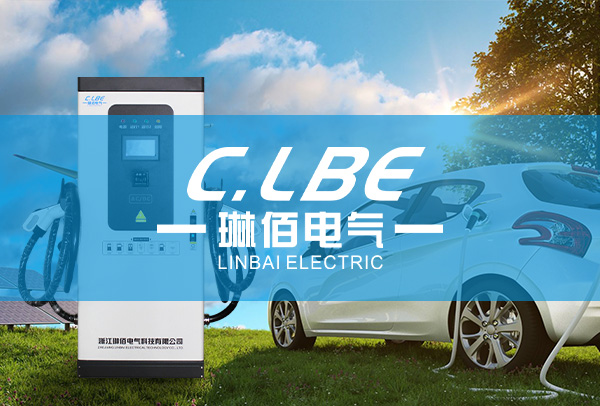
10-07 2021
Reducing costs and increasing efficiency has always been the direction of Linbai electric people’s efforts
1500VDC-Trend and inevitable choice of parity system
Reducing costs and increasing efficiency has always been the direction of Linbai Electric people's efforts. Among them, the role of technological innovation is key. In 2019, with China's accelerated subsidies, 1500Vdc has high hopes.
According to IHS data from the research and analysis organization, the 1500Vdc system was first proposed in 2012, and FirstSolar invested the first 1500Vdc photovoltaic power plant in the world in 2014. In January 2016, the first domestic 1500Vdc demonstration project-Golmud Sunshine Qiheng New Energy Golmud 30MW Photovoltaic Power Generation Project was officially connected to the grid for power generation, marking that the domestic 1500Vdc photovoltaic system has truly entered the stage of large-scale practical demonstration applications. Two years later, in 2018, 1500Vdc technology has been applied on a large scale internationally and domestically. Among the third batch of domestic leading projects that started construction in 2018, the Golmud project with the lowest bid price (0.31 yuan / kWh), as well as the GCL Delingha and Chint Baicheng projects have all adopted 1500Vdc technology. Compared with the traditional 1000Vdc photovoltaic system, the 1500Vdc photovoltaic system has been widely used recently. Then we can easily have such questions:
Why increase the voltage from 1000Vdc to 1500Vdc?
Except the inverter, can other electrical equipment withstand the high voltage of 1500Vdc?
How effective is the 1500Vdc system after use?
1. Technical advantages and disadvantages of 1500Vdc photovoltaic system
advantage analysis
1) Reduce the amount of junction box and DC cable
In "Code for Design of Photovoltaic Power Plants (GB 50797-2012)", the matching of photovoltaic modules and inverters should comply with the following formula:
According to the above formula and the relevant parameters of the components, each string of the 1000Vdc system is generally 22 components, while each string of the 1500Vdc system can allow 32 components.
Taking 285W module 2.5MW power generation unit and string inverter as an example, 1000Vdc system: 408 photovoltaic strings, 816 pairs of pile foundation, 34 sets of 75kW string inverter; 1500Vdc system: 280 photovoltaic groups String, 700 pairs of pile foundations, 14 sets of 75kW string inverters; as the number of strings is reduced, the amount of DC cables connected between the components and the AC cables between strings and inverters will be reduced.
2) Reduce DC line loss
∵ P = I R I = P / U
∴ U increases by 1.5 times → I becomes (1 / 1.5) → P becomes 1 / 2.25
And ∵ R = ρL / S DC cable L becomes 0.67, 0.5 times the original
∴ R (1500Vdc) <0.67 R (1000Vdc)
In summary, the 1500VdcP of the DC part is about 0.3 times the 1000VdcP.
3) Reduce a certain amount of engineering and failure rate
Due to the reduction in the number of DC cables and junction boxes, the number of cable joints and junction box wiring installed during construction will be reduced, and these two points are prone to failure. Therefore, 1500Vdc may reduce a certain failure rate.
4) Reduce investment
Increasing the number of single-string components can reduce the cost of a single watt. The main differences are the number of pile foundations, the length of the cable after DC convergence, and the number of junction boxes (centralized).
Relative to the 22-string scheme of the 1000Vdc system, the 32-string scheme of the 1500Vdc system can save about 3.2 points / W for cables and pile foundations.
Disadvantage analysis
1) Increased equipment requirements
Compared with the 1000Vdc system, the voltage increased to 1500Vdc has a significant impact on circuit breakers, fuses, lightning protection devices and switching power supplies, and put forward higher requirements for withstand voltage and reliability, and the unit price of equipment will be relatively increased.
2) Higher safety requirements
After the voltage is increased to 1500Vdc, the risk of electrical breakdown is increased, thereby improving insulation protection and electrical clearance. In addition, once an accident occurs on the DC side, it will face more serious DC arc extinction problems. Therefore, the 1500Vdc system increases the system's safety protection requirements.
3) Increase the possibility of PID effect
After the photovoltaic modules are connected in series, the leakage current formed between the cells of the high-voltage module and the ground is an important cause of the PID effect. After the voltage is increased from 1000Vdc to 1500Vdc, it is obvious that the voltage difference between the cell and the ground will increase, which will increase the possibility of PID effect.
4) Increase matching loss
There is a certain loss of matching between photovoltaic strings, mainly caused by the following reasons:
The factory power of different photovoltaic modules will have a deviation of 0 ~ 3%. The cracks formed during transportation and installation will cause power deviation.
Uneven attenuation and uneven blocking after installation will also cause power deviation.
In view of the above factors, increasing each string from 22 components to 32 components will obviously increase the matching loss.
In response to the above problems of 1500V, after nearly two years of research and exploration, equipment companies have also made some improvements.
Second, the 1500Vdc photovoltaic system core equipment
1. Photovoltaic module
First Solar, Artus, Tianhe, Yingli and other companies took the lead in launching 1500Vdc photovoltaic modules.
Since the world's first 1500Vdc photovoltaic power plant was completed in 2014, the application volume of 1500V systems has continued to expand. Driven by this situation, the IEC standard began to incorporate 1500V related specifications into the implementation of the new standard. In 2016, IEC 61215 (for C-Si), IEC 61646 (for thin films), and IEC61730 are component safety standards below 1500V. These three standards complement the performance testing and safety test requirements of the 1500V component system and break the last obstacle of the 1500V requirements, which greatly promotes the compliance of the 1500V power station standards.
At present, China's domestic first-line manufacturers have launched mature 1500V products, including single-sided components, double-sided components, double-glass components, and have obtained IEC related certification.
In response to the PID problem of 1500V products, the current mainstream manufacturers take the following two measures to ensure that the PID performance of 1500V components and conventional 1000V components remain at the same level.
1) By upgrading the junction box and optimizing the component layout design to meet the 1500V creepage distance and clearance requirements;
2) The thickness of the backplane material is increased by 40% to enhance insulation and ensure the safety of components;
For the PID effect, each manufacturer guarantees that under the 1500V system, the component still guarantees that the PID attenuation is less than 5%, ensuring that the PID performance of the conventional component remains at the same level.
2. Inverter
Overseas manufacturers such as SMA / GE / PE / INGETEAM / TEMIC generally launched 1500V inverter solutions around 2015. Many domestic first-tier manufacturers have launched inverter products based on the 1500V series, such as Sungrow SG3125, Huawei's SUN2000HA series, etc., and are the first to be released in the US market.
NB / T 32004: 2013 is a standard that domestic inverter products must meet when they are marketed. The applicable scope of the revised standard is: a photovoltaic grid-connected inverter connected to a PV source circuit with a voltage not exceeding 1500V DC and an AC output voltage not exceeding 1000V. The standard itself already includes the DC 1500V range, and gives test requirements for PV circuit overvoltage, electrical clearance, creepage distance, power frequency withstand voltage and other tests.
3. Combiner box
The standards for the combiner box and each key device are ready, and 1500Vdc has entered the combiner box certification standard CGC / GF 037: 2014 "Photovoltaic combiner equipment technical specifications".
4. Cable
At present, the 1500V standard for photovoltaic cables has also been introduced.
5. Switch and lightning protection
In the photovoltaic industry in the 1100Vdc era, the output voltage of the inverter is up to 500Vac. You can borrow the 690Vac distribution switch standard system and supporting products; from 380Vac voltage to 500Vac voltage, there is no switch matching problem. However, in the early period of 2015, the entire photovoltaic and power distribution industry did not have 800Vac / 1000Vac power distribution switches and other specifications, resulting in difficulties in supporting the entire product and high supporting costs. Linbai Electric launched the 800VAC / 1000VAC series CLBM3-250HU MCCB molded case circuit breaker and CLBW1 ACB frame circuit breaker series products in May 2019, which successfully solved the problems of difficulty in matching the entire product and high cost.
Comprehensive description
The 1500Vdc photovoltaic system has been widely used overseas and is already a mature application technology worldwide.
Therefore, the main equipment of the photovoltaic system has achieved mass production, and the price has fallen sharply compared to the demonstration stage in 2016.
3. Application of 1500Vdc photovoltaic system
As mentioned above, the 1500Vdc photovoltaic system has been applied abroad as early as 2014 due to its low overall cost and high power generation.
Global 1500Vdc application exploration case
First solar announced in May 2014 that the first 1500Vdc power plant built in Deming, New Mexico was put into use. The total capacity of the power station is 52MW, 34 arrays adopt 1000Vdc structure, and the remaining arrays adopt 1500Vdc structure.
SMA announced in July 2014 that its 3.2MW photovoltaic power plant built in Sandershauser Berg industrial park in Niestetal, Kassel, northern Germany has been put into use, and the power plant uses a 1500Vdc system.
1500Vdc has been widely used in low-cost projects
At present, Linbai Electric has successfully opened CLB series 1500VDC fuse, circuit breaker, disconnector, surge protector, combiner box, CLB series 800VAC / 1000VAC MCCB molded case circuit breaker, ACB frame circuit breaker 800VAC, SCB 800VAC step-up transformer and Modular SF6 inflatable cabinets and other products are widely used in solar photovoltaic power generation.

